Snapdragon: description and varieties, planting and care
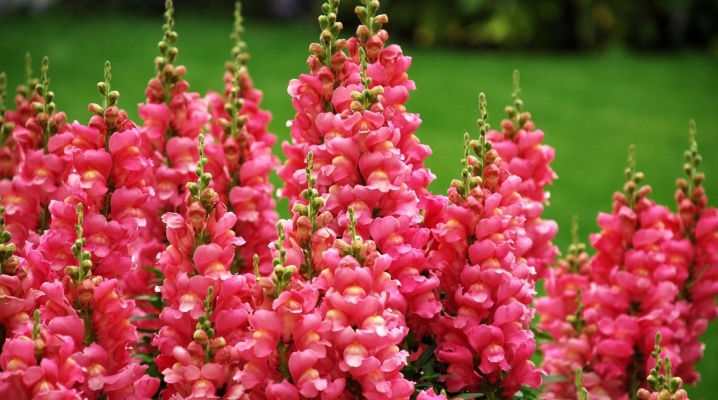
A flower with an original name and a unique appearance has won the hearts of many flower growers. Snapdragon often adorns household plots, delighting with multi-colored splendor. You can also see him in a pots. Let's get acquainted with the most popular varieties of this culture, as well as learn about the intricacies of its cultivation.
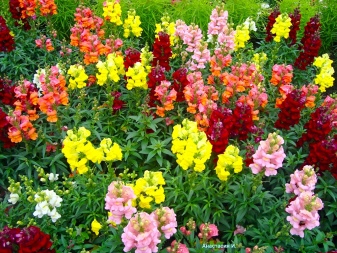
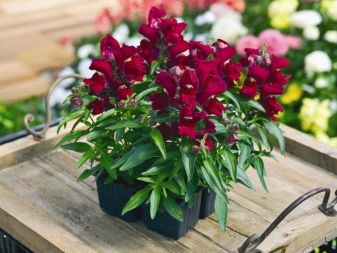
Annual or perennial flowers?
Snapdragon (antirrinum) is a herbaceous plant. It belongs to the plantain family. However, unlike ordinary green grass, the crop looks very impressive. Beautiful flowers allow you to create expressive landscape compositions, which explains their popularity.
There are about 50 varieties of antirrinum, each of which is subdivided into numerous varieties. Plants differ in height, color of petals. The description of the culture says that it is perennial. However, in the Russian climate, flowers rarely live longer than 1 year.
This is due to the harsh winters during which the delicate bushes freeze over.
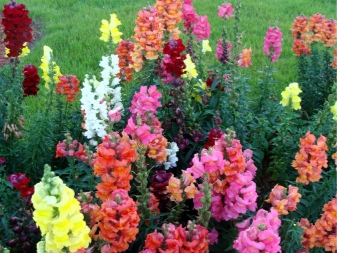
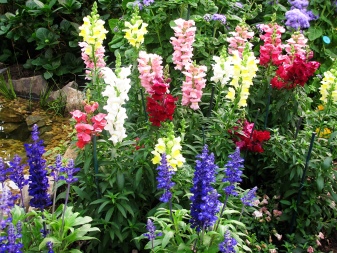
Plants have simple stems that form neat bushes. Height varies from 20 cm to 1 meter. The leaves are pubescent, narrow. Inflorescences are racemose. The flowers have an unusual shape. At the peak of flowering, they resemble the face of a lion, opening its mouth in a roar. The name of the culture is connected with this. The flower is pollinated by bumblebees. Getting into the throat, the insect is covered with pollen, which it carries on.
Field and meadow wild flowers can be of different colors. However, thanks to breeders, the palette becomes even wider every day, because work on the creation of new varieties of culture is ongoing. There are snow-white, pink, purple, coral, yellow, red and other shades of antirrinums. Some varieties combine two colors at once. For example, red color is incompletely dominant over white. Also, in addition to varieties with regular petals, there are terry varieties.
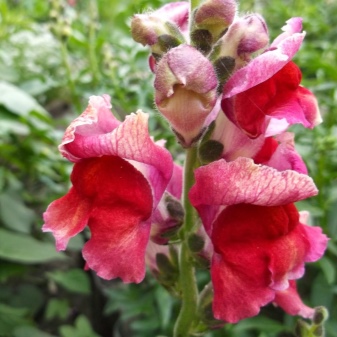
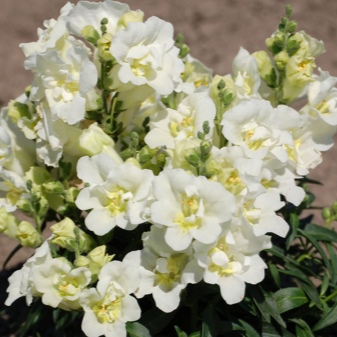
Snapdragon is believed to have medicinal properties. Therefore, infusions and decoctions from plants are often used in the fight against various ailments. However, the main advantage of culture is still considered to be its decorative effect. Let's consider in more detail the popular varieties of antirrinum.
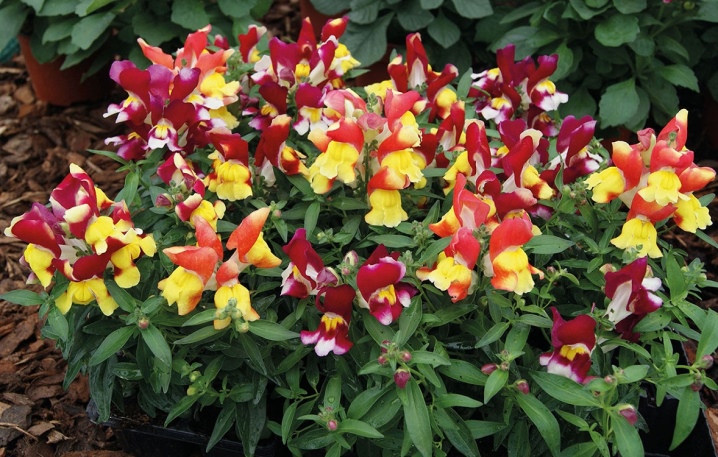
Types and varieties
All varieties of snapdragons can be roughly divided into several groups, depending on the height.
High
Large flowers grow up to 80 cm, and sometimes even taller. They usually look like pyramids with the main stem just above the rest. These flowers are often cut for spectacular bouquets. When cut, they remain fresh and attractive for a long time.
The most famous varieties:
- "Velvet Giant" - has burgundy red large flowers;
- "Volcano" - a variety with a "sunny" orange-yellow color;
- "Alaska" - a luxurious snow-white variety;
- "Madame Butterfly" - large double flowers of different shades (white, yellow, pink, burgundy);
- "California Color Mix" - narrow pyramidal bushes, growing up to 90 cm, with flowers of various tones.
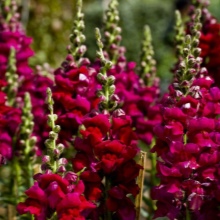

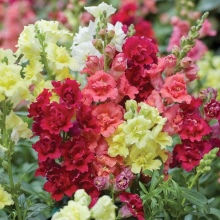
Average
Varieties of medium height (from 40 to 60 cm) are particularly splendid. These flowers are great for decorating flower beds. They are also grown in flowerpots. The most famous are the following:
- "Wild Rose" - charming pink buds gather in lush inflorescences;
- "Golden Monarch" - a variety with spectacular bright yellow petals;
- "Crimson corduroy" - gorgeous red flowers growing up to 50 cm;
- "Red Chief" - a flower with a height of 45 cm, decorated with burgundy-red velvety buds.
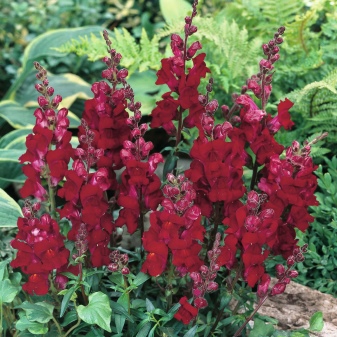
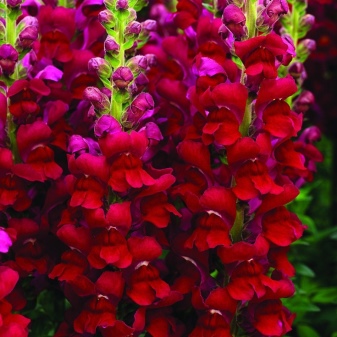
Undersized
Flowers below 40 cm are considered stunted. If the plant is less than 25 cm tall, it is recognized as dwarf. Small bushes are compact, often in the shape of a ball. Such plants are often used to create carpet-type flower beds.
They are also planted along the walking paths.
Among the most popular varieties are the following:
- "Floral" - variety group (15-20 cm) with different color options, suitable for growing in pots;
- "Twinny" - undersized hybrids (up to 30 cm) with double flowers of different colors (pink, purple, orange, crimson, etc.);
- "Snappy" - a series of small bushes (up to 20 cm) with a rich color range (pink, purple, white, yellow, peach, etc.).
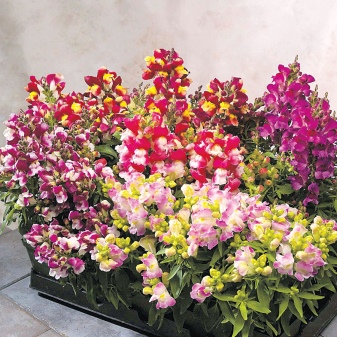
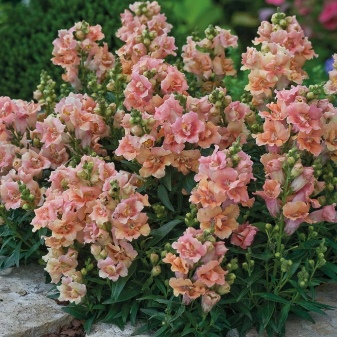
Ampelny
These varieties are used to decorate pots. Usually low-growing varieties are planted in suspended containers, but sometimes options with long drooping shoots are also chosen. Among the ampelous varieties, "Lampion" is the most popular.
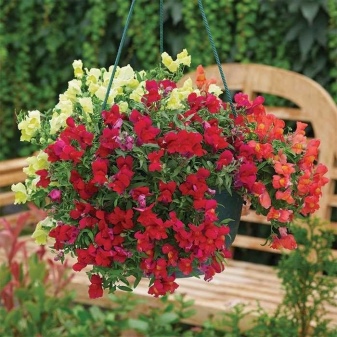
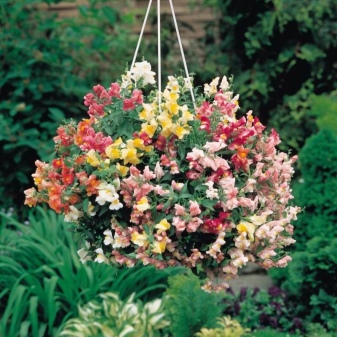
Optimal planting times
If sowing is done immediately on the site, they do it in the spring. The main thing is that the soil has time to warm up. The first shoots will appear after 2.5-3 weeks. If the seedling method is chosen, sowing at home is done in mid-March. Landing in open ground is usually carried out in the first days of June. You can do this at the end of May.
Some gardeners like to sow before winter. In this case, the seeds do not germinate immediately. In winter, they remain in the ground and are hardened. In the spring, strong and healthy plants appear. The procedure begins at the end of October. If the site is in the southern region, the best time to plant is mid to late November. Previously, it is not worth placing seed in the ground. Heat can trigger seedling. In this case, young plants will die with the onset of frost.
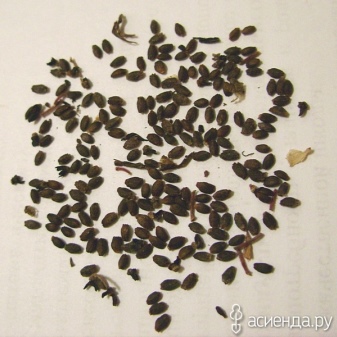
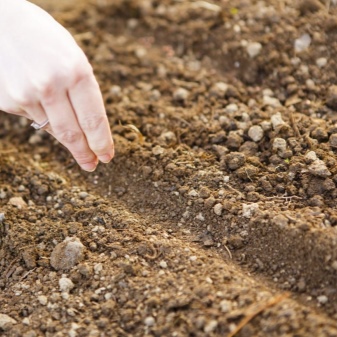
Interestingly, the flowering time also depends on the sowing time. The earliest appearance of buds occurs in antirrinums grown by the seedling method. A little later, "podzimnye" plants bloom. Even later, flowers appear in specimens sown in the ground in spring.
Growing seedlings
Soil selection
The soil should be light and loose. You can buy a ready-made composition in a specialized store. Self-preparation of the nutritional composition is also allowed. In this case, sod land, sand and peat are mixed in equal parts. Then put a little humus and wood ash into the resulting mixture.
After that, the composition is thoroughly mixed and sieved.
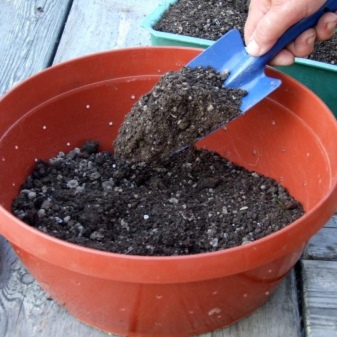
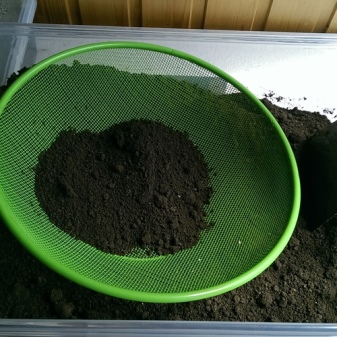
Seed preparation
When choosing seed material in the store, consider the necessary characteristics (height, flowering period). For many, the color of culture is also important. You can collect the seeds yourself. In this case, the seeds are dried, folded into a bag and placed in the refrigerator. The best place would be the bottom shelf. There the planting material is stored until spring.
Before direct planting, the seeds are disinfected. For this, a weak solution of manganese is used. A half-hour soaking is enough. Then the seeds are removed and laid out on a napkin. Sowing is started only after complete drying.

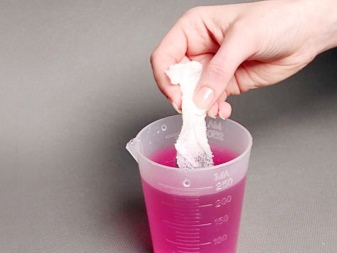
Sowing
The snapdragon container must be high enough. The minimum allowable figure is 10 cm. Holes must be made in the bottom of the container to drain excess water.
First, a drain is placed in the container. You can use expanded clay, vermiculite, small stones. A nutritious soil mixture is laid on top of the drainage layer. For disinfection purposes, the soil is spilled with a light manganese solution. Then the container is left for two days.Only after that do they start sowing.

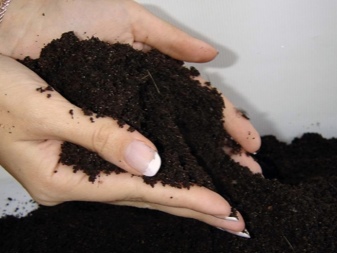
The seed is mixed with clean sand and placed in a paper envelope with the edge cut off. This will distribute the seeds more evenly over the surface. Small grooves are made in the soil. A distance of 2 cm must be observed between the rows.
After sowing, the seeds are gently pressed to the ground. Sand and fertile soil are poured on top in a thin layer. Then the plantings are sprayed from a fine spray gun. After that, the container is covered with foil and placed in a bright place. The optimum temperature level is 18-20 C. Periodically, the film is raised so that future flowers are aired. When the top layer of the soil dries up, moisture is produced.
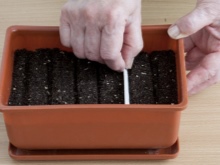
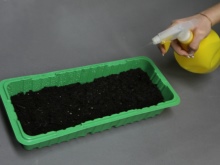

Seedling content
When sprouts appear, the shelter is removed. Do it gradually. They start with long airings, each day increasing the time by 15 minutes. After 3 weeks, you will be able to see the first leaves. When two pairs of leaves appear on each sprout, a pick is made.
Young plants are planted in peat cups. Ordinary containers can also be used. The diameter of each container should not be less than 8 cm. If one large box is selected, planting is carried out according to the 5x5 cm scheme. When the movement of the shoots is completed, the soil must be watered.
After that, the containers are transferred to a darkened place.
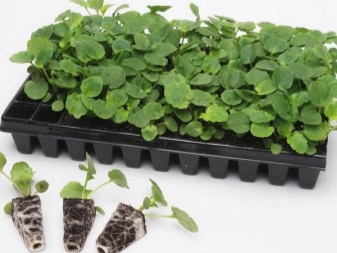

This procedure increases the bushiness of flowers. Also for this purpose, pinch the tops of the seedlings. If young flowers have been moved to a common container, then after a while they will need to be transplanted again. At the second pick, the distance between the specimens should be already 10 cm.
Moisturizing should be regular but moderate. Excess moisture can lead to disease. If a suspicious plaque has appeared on the ground, it is urgent to process it. To do this, dissolve 10 drops of "Fitosporin" in one liter of water. The procedure can be completed by distributing crushed charcoal over the soil surface.
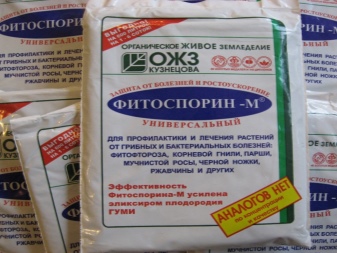
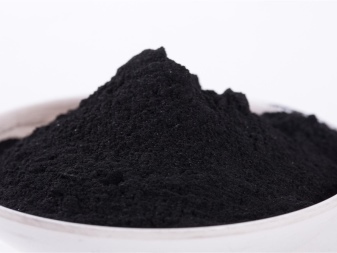
Landing in open ground
As mentioned earlier, the transfer of plants to the site is carried out after the end of the last spring frosts. Specific dates vary from region to region. The approximate period is from late May to mid-June.
It is better to choose a place with suitable soil. For this culture, sandy loams are preferred. To increase the splendor and duration of flowering, you can add a little wood ash, organic matter, peat, as well as complex fertilizers for flowering crops to the ground. If there is too much sand, add black soil, leafy soil. It is important to achieve good soil permeability. But at the same time, it must retain moisture in itself.
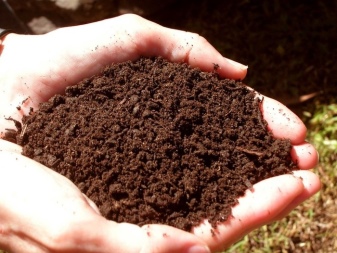
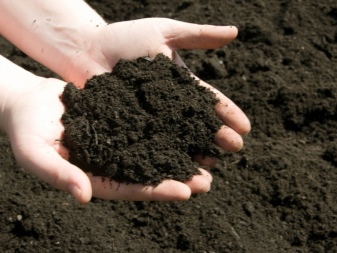
When choosing a place, do not forget about lighting. Snapdragon requires a lot of light. Culture will not bloom in the shade.
It is better to transplant in cloudy weather. If the days are sunny, you can set aside time for the procedure in the evening. If several plants are planted on the same bed, a certain distance between the specimens should be observed:
- for dwarf ones - 15 cm;
- for low - 20 cm;
- for medium - 30 cm;
- for tall ones - 40 cm.
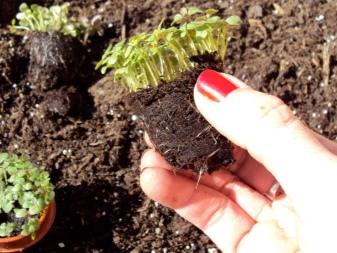

Before planting seedlings, you should dig up the soil and loosen it. It is better to use the transshipment method. This will minimize the risk of injury to the root system. Also, do not forget about pre-watering. This will keep the earthen lump intact.
It is not necessary to deeply deepen the flowers. It is enough to lower them into the ground until the first (cotyledonous) leaves. After planting, the soil should be gently crushed.
It is not recommended to plant different varieties in one place. This can lead to cross-pollination.
In this case, next year you may find completely different plants on the site.

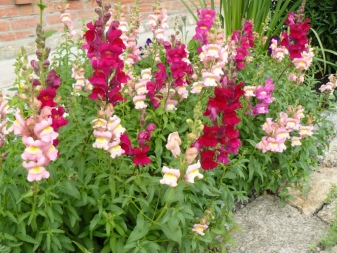
How to take care of it properly?
Watering
Water the plants regularly, but in moderation. The main thing is not to forget about moistening the soil after planting seedlings and on dry summer days. After irrigation, the soil around the flowers should be loosened. It is also worth monitoring the timely removal of weeds. Mulching is a good idea. To do this, you can use wood chips, nut shells, grass cuttings.
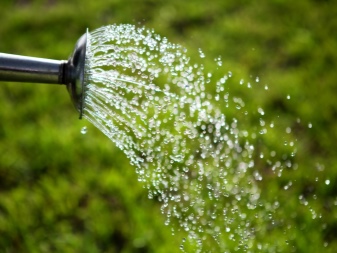
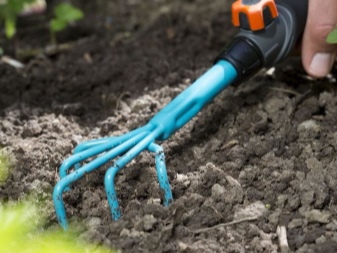
Top dressing
After planting seedlings on the site, you should wait two weeks. During this time, the plants will have time to adapt to a new place. When the bushes grow, you can start feeding them. Usually mineral fertilizers are applied. Be sure to feed the culture after flowering, because this process depletes the plant.
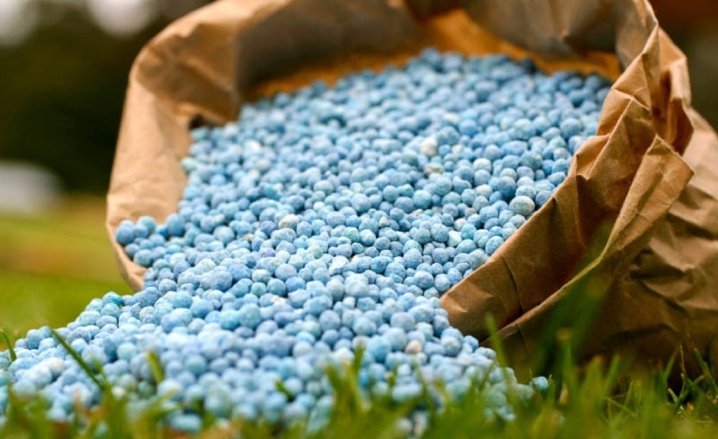
During and after flowering
It is better to remove faded buds immediately. This will maximize flowering and give your plants a neat look. If the variety is tall, the stem should be tied up. The support will help the peduncles to keep straight and not bend under the weight of the buds.
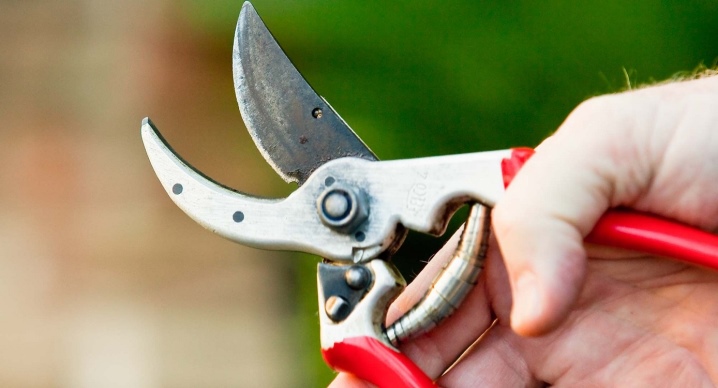
Wintering
Most varieties of antirrinum cannot withstand the conditions of the harsh Russian winters. However, you can try to save the plant until next year. To do this, at the end of autumn (before the first frost), you need to cut the bush. It is recommended to leave the stem about 10 cm long. Then you need to spud the flower and organize a shelter for it. Make a small slide of dirt around the crop. Put spruce branches, fallen leaves, peat on it. The thickness of the protective layer should not be less than 10 cm.
At the beginning of spring, the mulch is removed. The emerging sprouts (if any) are planted in new places or left in the same bed. Flowering should be expected later than for plants planted with seedlings.
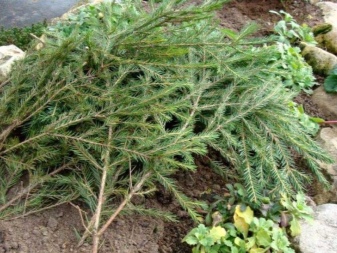
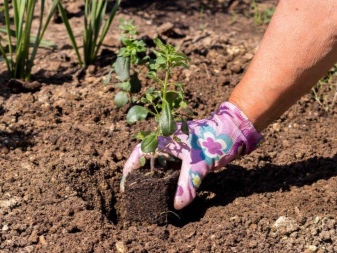
How and when to harvest the seed?
After the end of the flowering culture, seed bolls appear. The seeds are small and black in color. Strong and healthy specimens are chosen to collect seed. It is not worth waiting for the seeds to ripen on the plant. It is necessary to immediately cut off the faded inflorescences and remove them to ripen indoors.
The appearance of the capsule indicates the readiness of the seed. It will turn yellowish brown. The seeds must be collected and placed in a paper bag. When they are completely dry, they are sent to the refrigerator.
They can be stored there for up to 5 years without losing their properties.
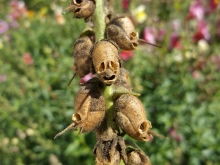
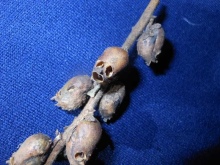
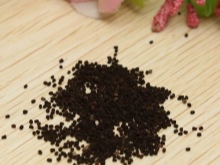
Reproduction methods
In addition to seed propagation, there is another way to get a new snapdragon flower. This is grafting.
In the fall (September), you need to dig up the plant and move it to the pots. Then you need to cut off all weak branches and wilted inflorescences. After that, the flower is removed to a cool place. A glazed loggia or veranda will do. The optimum temperature level is 5 degrees Celsius. Periodically, the culture needs to be moistened.
At the end of January, the plant is moved to a warm, well-lit room. Then it is pruned, leaving about 10 cm, and new shoots are awaited. Cuttings will need to be cut. Moreover, each must have at least 2 pairs of leaves. The lower leaves are removed. The upper ones are cut in half.
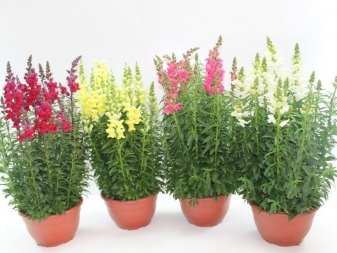
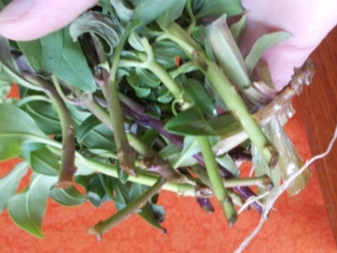
A cut of each cut is immersed in Kornevin for a short time. Crushed activated carbon can also be used. After that, the cuttings are placed in a light sterilized composition of sand and peat. Greenhouse conditions are created by covering the planting material with foil or transparent plastic.
Rooting will occur in a couple of weeks. All this time, one must not forget to spray and air the young plant every day. When a young growth appears, the flowers are placed in separate containers.
In early June, cuttings can already be planted in open ground. The mother plant is also returned to the site. It will bloom again and please the eye.
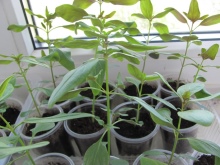
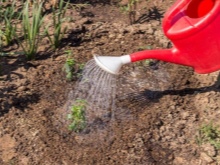
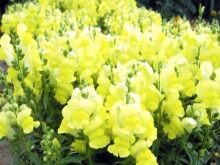
Diseases and pests
It is important to monitor the condition of the plant and, if suspicious signs are found, immediately take action. Several diseases are most common.
- Downy mildew and powdery mildew. Diseases are manifested by light spots on the leaves, under which a brown color is hidden.To reduce the risk of trouble, you should maintain the recommended distance between plants when planting. For treatment, "Ridomil Gold", copper oxychloride, "Fitosporin" are used. All affected areas should be removed.
- Rust. The yellow-brown spots spread over time and lead to the death of the flower. Treat culture with "Topaz", Bordeaux liquid. The infected leaves are eliminated.
- Brown rot. The foliage turns pale, then turns yellow and falls off. The roots are also affected by decay. To keep the flower safe, do not water it too often. When planting, prophylaxis can be carried out by introducing "Glyokladin" into the soil. Another option is Fitosporin solution.
- Brown rot. It is manifested by a change in the color of the stem at the base. Spraying of young specimens with "Rovral" serves as a preventive measure. Watering with "Glyokladin" is also recommended when planting.
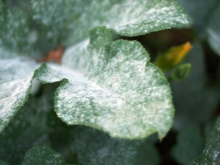
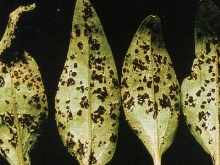
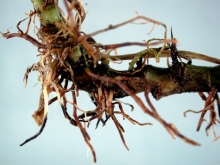
As for pests, caterpillars are the most dangerous to snapdragons. Timely weeding is the prevention of their appearance. If the problem has already been identified, chlorophos is used.
Use in landscape design
Snapdragon looks great in a flower bed and in combination with other flowers, and surrounded by greenery. Low-growing varieties are often combined with asters, phloxes, lavaters, cosmos, marigolds, forget-me-nots. The main thing is to take into account the combinations of shades so as not to get too variegated composition.
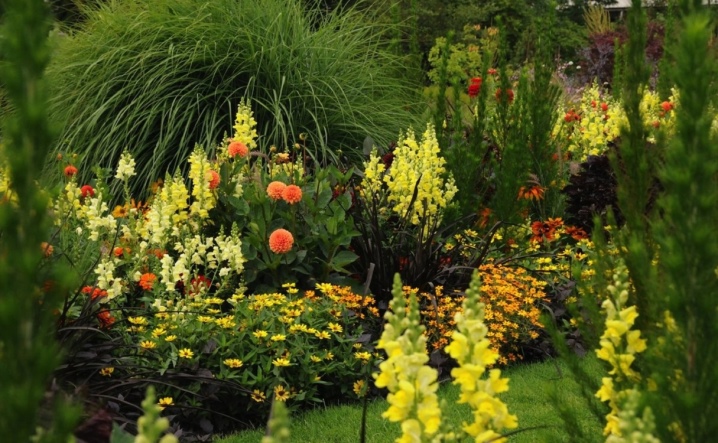
Some gardeners prefer to plant several anti-rhinums in one place. You can combine different tones, for example, white with yellow or pink. You should not combine more than two shades, otherwise, when looking at a flower bed, a person will ripple in his eyes. Group plantings with buds of the same color look no less impressive.

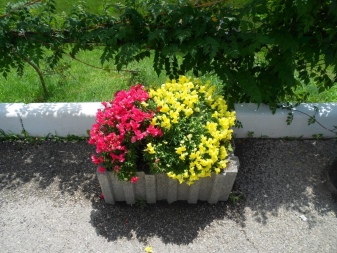
Snapdragon can be used to decorate curbs, lawns, rock gardens, rockeries. Ampel varieties can decorate a balcony, terrace or even an apartment.
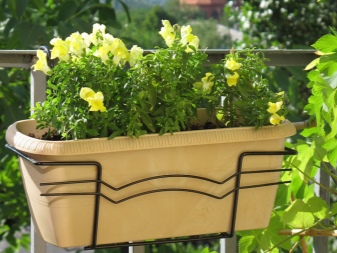
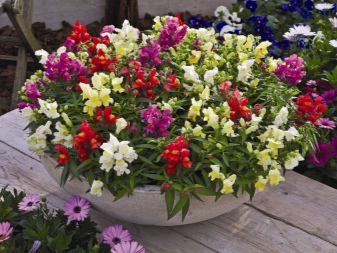
For more information on Snapdragon, see the next video.







































































































The comment was sent successfully.